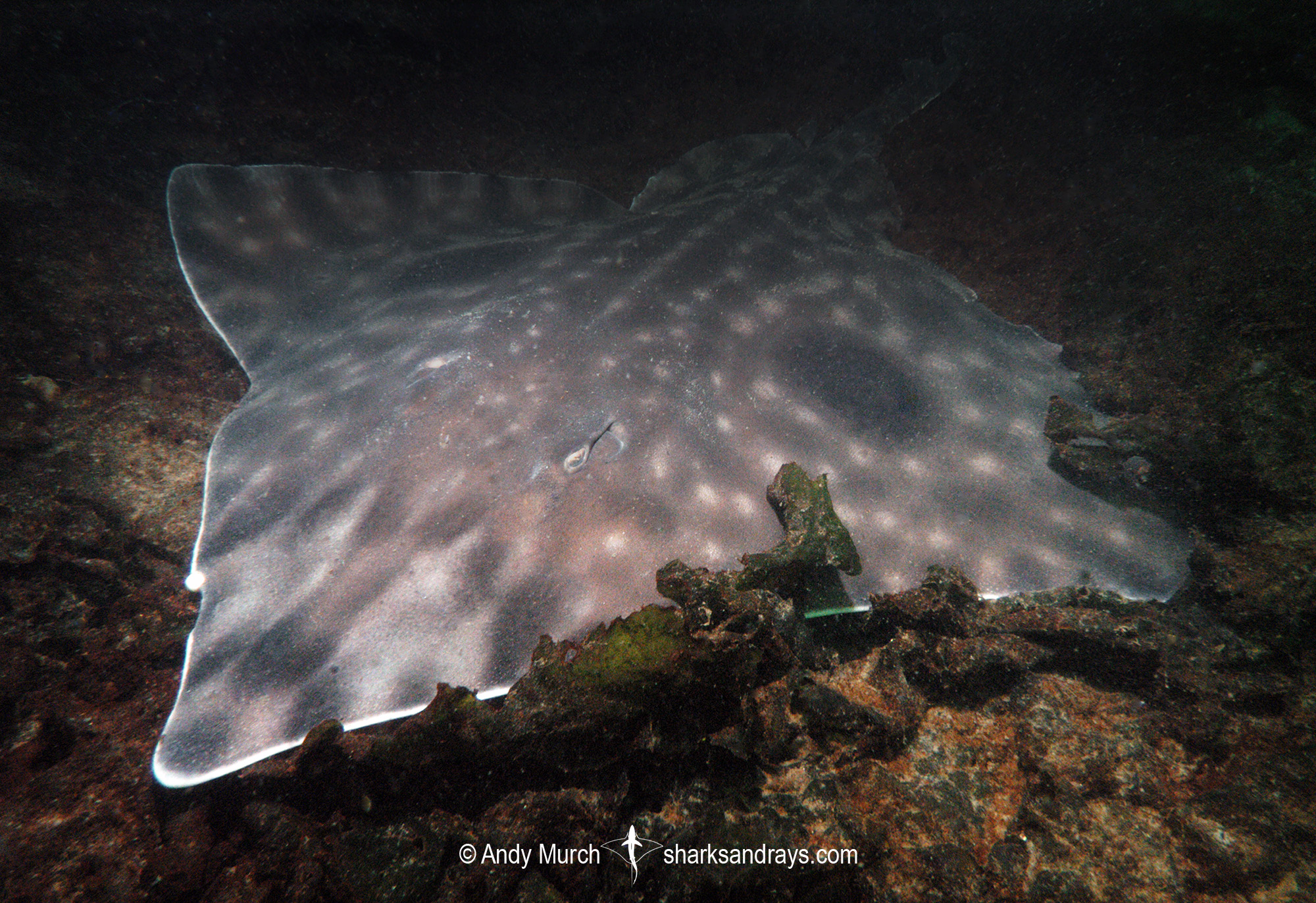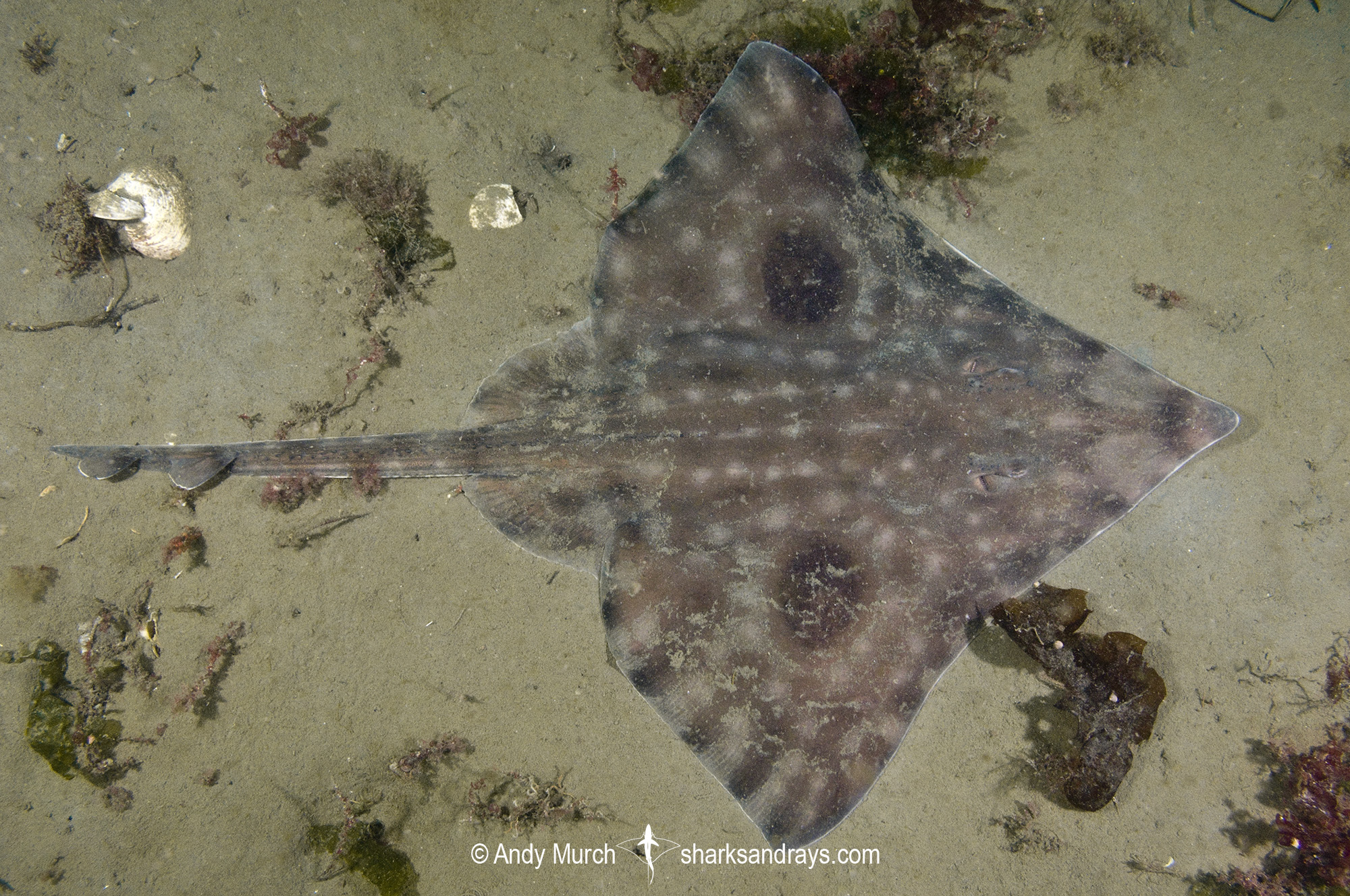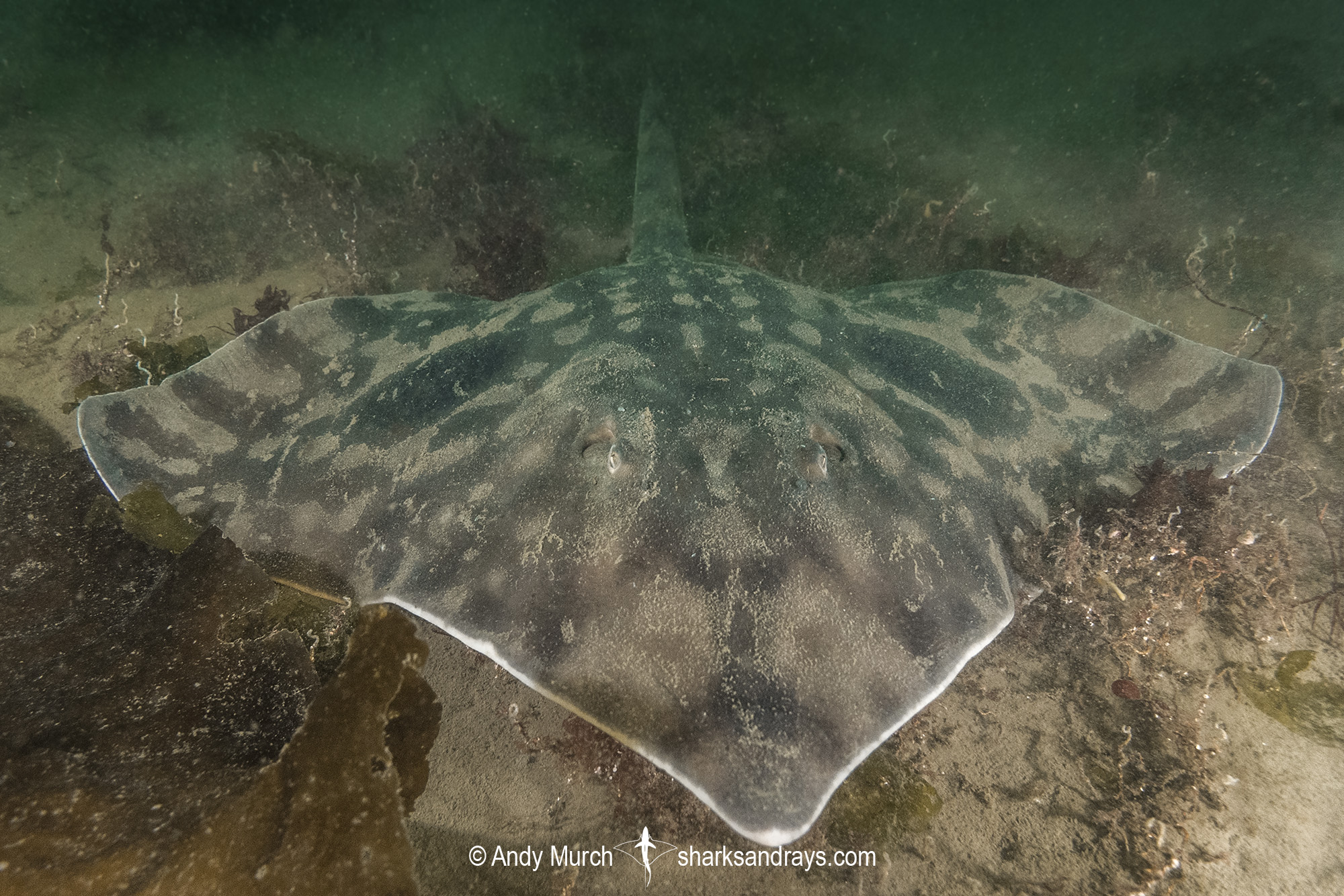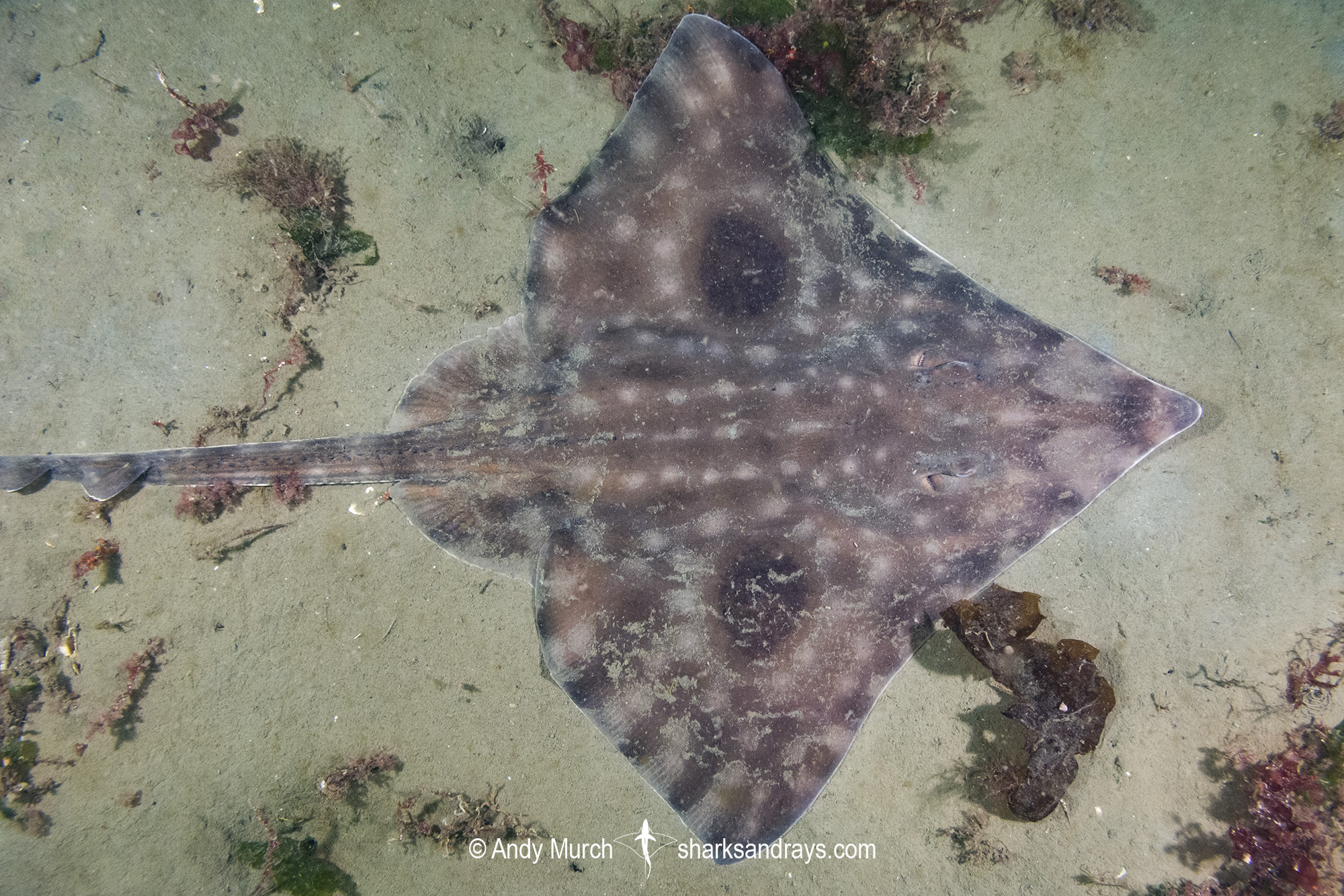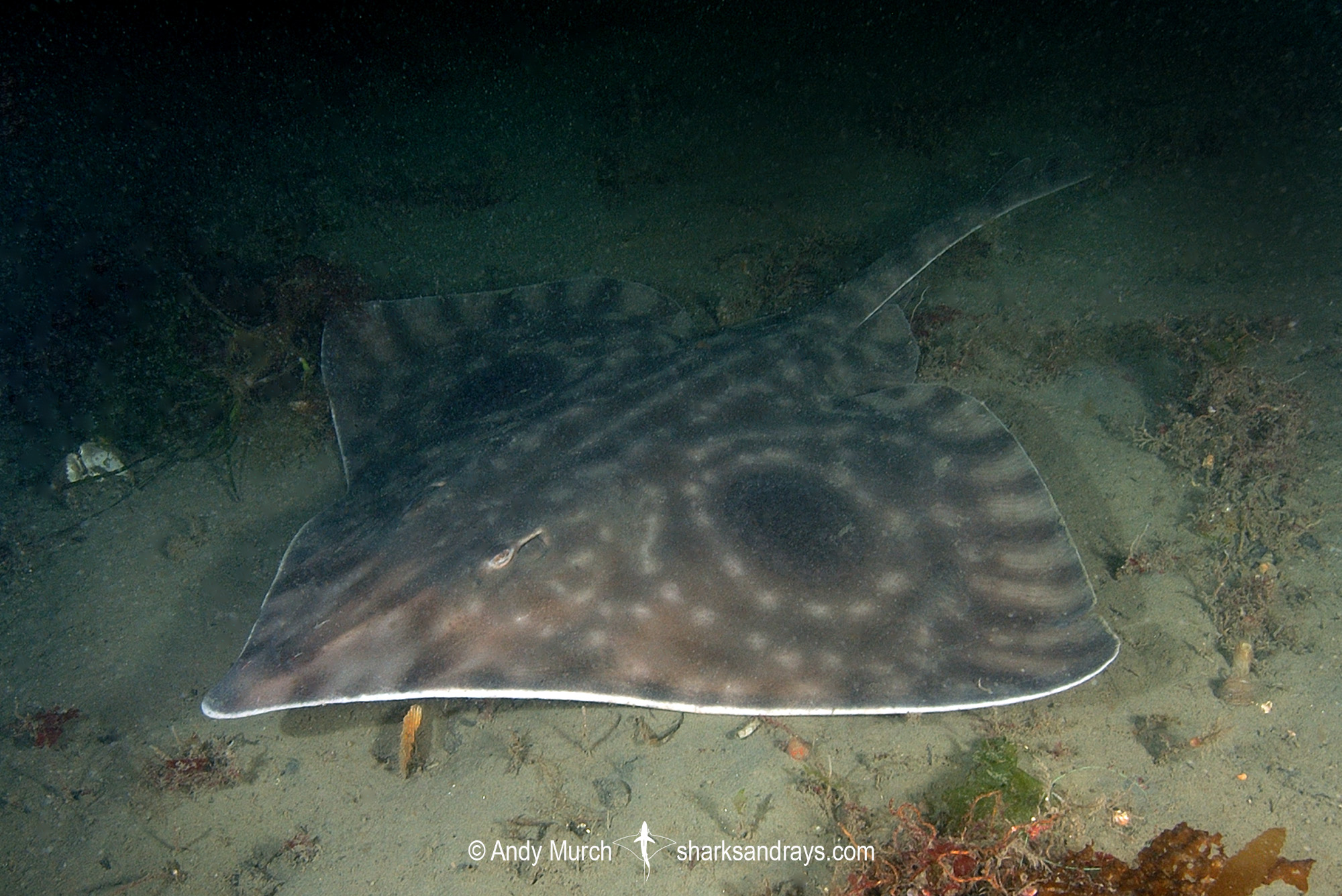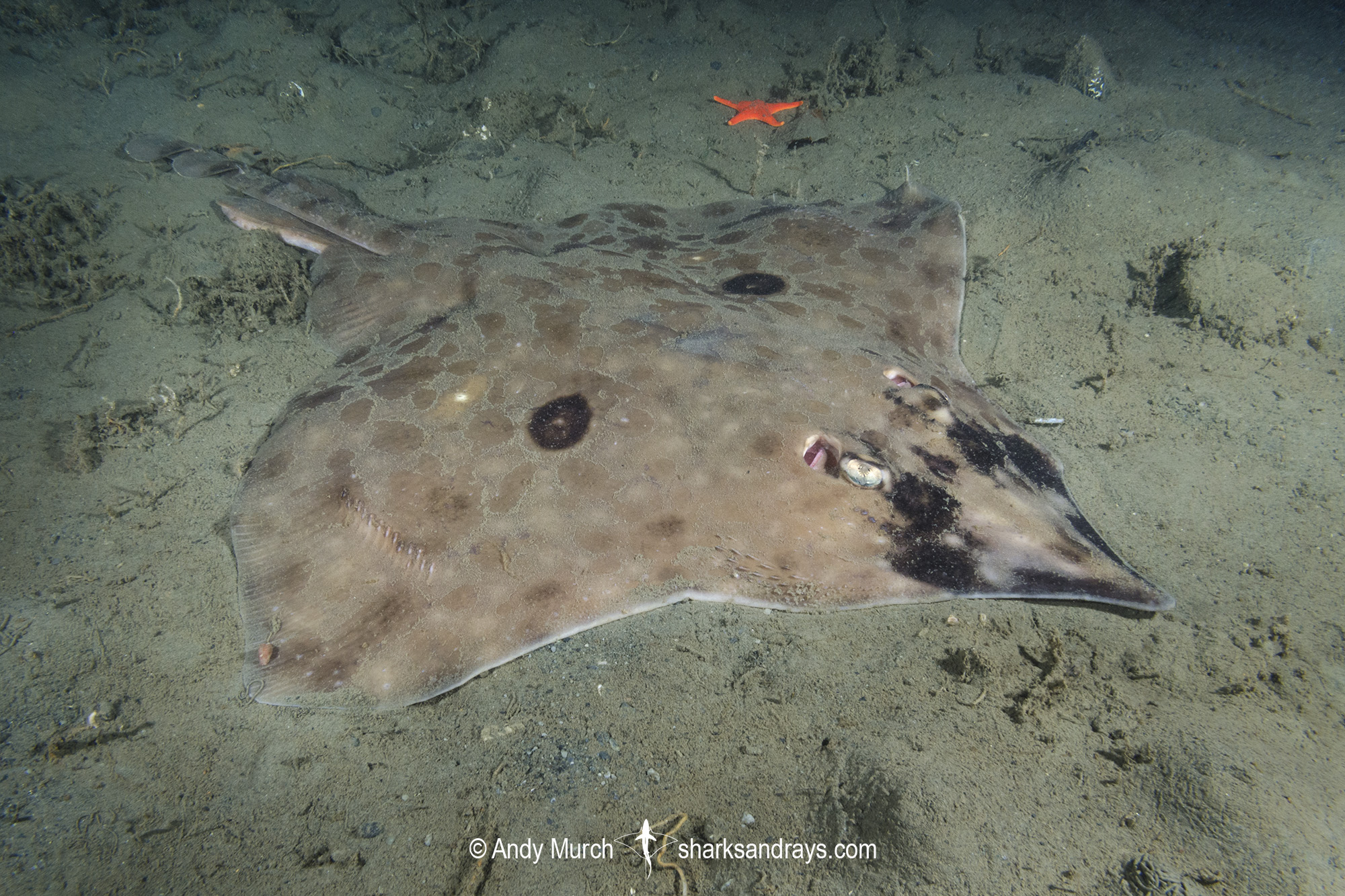Common name(s)
Big Skate.
Identification
A very large skate with a wide kite-shaped disc. Disc width 1.2-1.4 x disc length. Snout long and pointed with an acutely angular tip. Snout length 5.7-6.6 x orbit length. Eyes small. Anterior margins of pectoral fins straight in females, weakly double concave in adult males; concave centrally and close to snout. Pectoral apices angular. Disc granular. 1-2 nuchal thorns. 3 orbital thorns. Midline thorns on tail only, indistinct in adults. Pelvic fins large, margin weakly notched. Anterior pelvic lobe much smaller than posterior lobe. Tail short, slender, and somewhat depressed with broad lateral folds. Tail length 0.74-0.89 x precloacal length. Dorsal fins broadly rounded and well separated. Caudal fin rudimentary.
Colour
Dorsum usually greyish-brown, olive-brown, or reddish brown with numerous diffuse pale spots that are 1-2 x eye-size, arranged in lines. One large blackish eyespot on each pectoral fin in adults. Juvenile pectoral ocelli consist of dark rings. Ventrum white, sometimes with dusky blotches and a dark stripe on tail.
Size
Maximum length 290cm but individuals exceeding 180cmTL are rare. Length at hatching 18-23cm.
Habitat
Temperate seas. Demersal on soft bottoms in shallow bays and on continental shelf and slope. Sometimes found resting on low-lying kelp. Usually close inshore to less than 200m, but recorded to 800m.
Distribution
Northeast/central Pacific. Found from Baja, Mexico to the Bering Sea.
Conservation Status
LEAST CONCERN
Commercial and recreational fisheries are most likely the main threat to Big Skates. In Californian waters the species was one of the three most important rajids in commercial and recreational fisheries along with the California Skate (Dipturus inornata) and Longnose Skate (Raja rhina; Roedel and Ripley 1950, Martin and Zorzi 1993) and is landed as bycatch from trawlers, longline and trammel nets (Zeiner and Wolf 1993, California Department of Fish and Wildlife 2015). Martin and Zorzi (1993) analysed trends in the commercial landings of skates from 1916-1990 and reported that annual landings of Rajidae ranged from 22.9-286.3 t. The skates that are landed in the Californian fishery have tended to be juvenile fish (Roedel and Ripley 1950, Martin and Zorzi 1993), with larger individuals being discarded.
In British Columbian and Alaskan waters ongoing direct and indirect take of the Big Skate occurs. Since the global market for skates is increasing, there is likely going to be a increasing demand for skate fisheries in the Northeast Pacific (Farrugia et al. in press 2016).
Citation
Farrugia, T.J., Goldman, K.J., King, J.R. & Ormseth, O.A. 2016. Beringraja binoculata. The IUCN Red List of Threatened Species 2016: e.T44183A80679344. https://dx.doi.org/10.2305/IUCN.UK.2016-2.RLTS.T44183A80679344.en. Downloaded on 21 April 2021.
Reproduction
Oviparous. The big skate produces unusually large (20-30cm TL) egg cases that contain multiple embryos. Hatching occurs after 6-20 months depending on water temperature.
Egg case flat on one side, with 2 sinuous ridges on the other, short curved horns extend from each end without tendrils.
Diet
Diet consists of benthic invertebrates and small fishes.
Behavior
In British Columbia, a study revealed that ~75% of tagged individuals were recaptured within 21 km of the tagging locations, but 15 of the tagged individuals (0.1%) moved over 1,000 km (King and McFarlane 2010). In the Gulf of Alaska, satellite tags showed that over a one-year period six of the twelve tagged individuals observed in this study moved over 100 km, and a single individual moved 2,000 km (Farrugia et al. in press 2016).
Reaction to divers
Very docile. Remains motionless unless molested or approached from above as this mimics the predatory approach of orcas or large sharks.
Big skates will often tolerate divers wafting sand away from their backs if done slowly.
Diving logistics
Big skates are randomly encountered at numerous dive sites in western Canada and Washington State. Virtually anywhere with large areas of sand or silt are potential habitats but sightings are far from guaranteed.
After many cold and murky dives at likely spots on Southern Vancouver Island I finally found this skate in 35ft of water at low tide off of Esquimalt lagoon, southwest of Victoria. Park anywhere along the beach. This bay has a very shallow incline so to get to this depth from shore requires about a 20 minute kick underwater following a SW compass heading as there are no visible landmarks under water at all. Probably the best area is just beyond the low lying kelp where the bottom is clearly visible. This will be at about 35 to 45ft depending on the tide. There is almost nothing else to see in this environment except for the occasional crab and flounder. If you’re lucky you may get buzzed by a seal or two.
Madrona Point north of Nanaimo on Vancouver Island has been identified as a nursery ground where big skate egg cases can be seen littering the substrate.
What’s new
View our full list of updates
Similar species
Longnose Skate Distinguishable by more pointed snout and ocelli with pale centres.
Mottled Skate A smaller but very similar species best distinguished by more westerly range; northwest Pacific.

